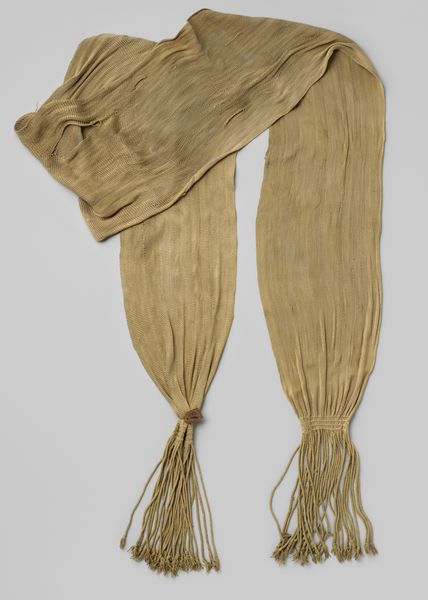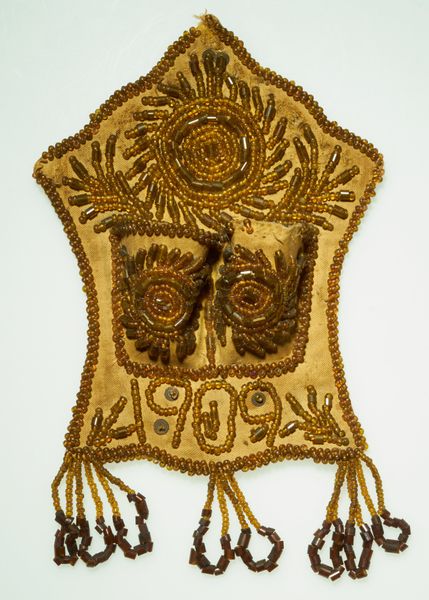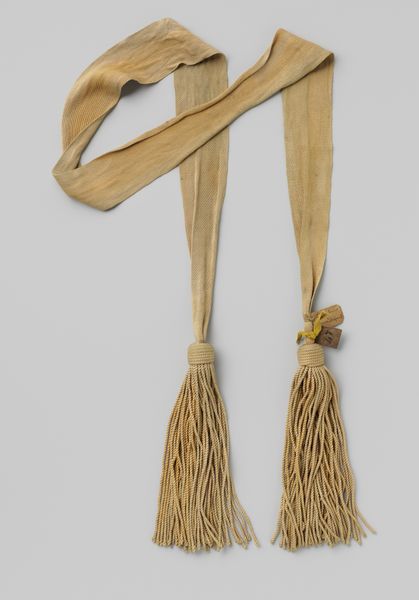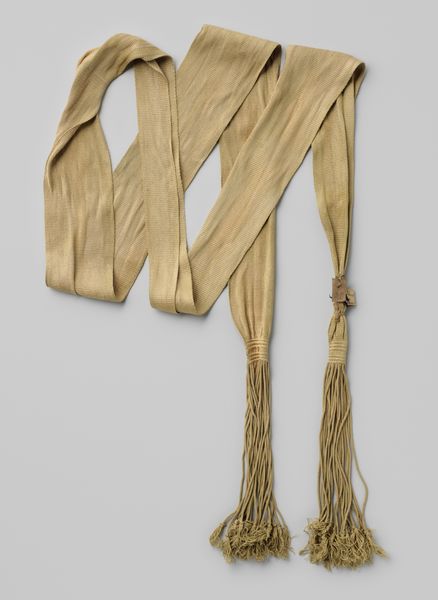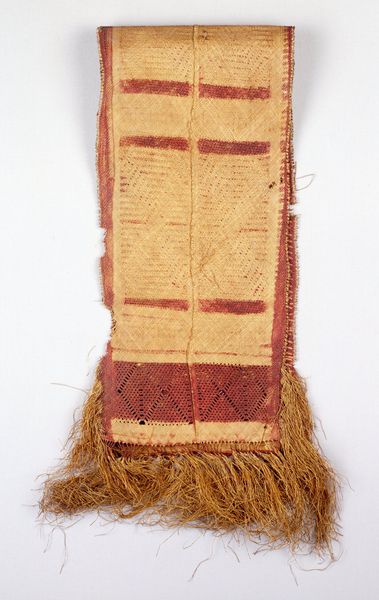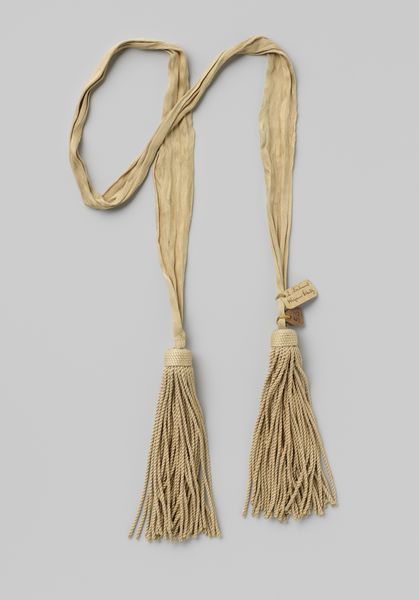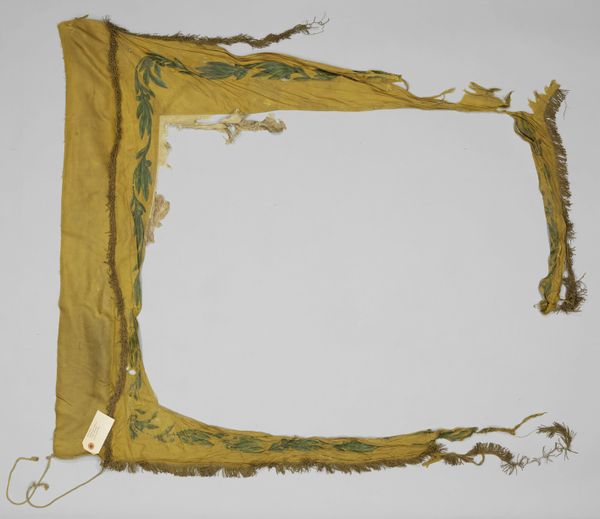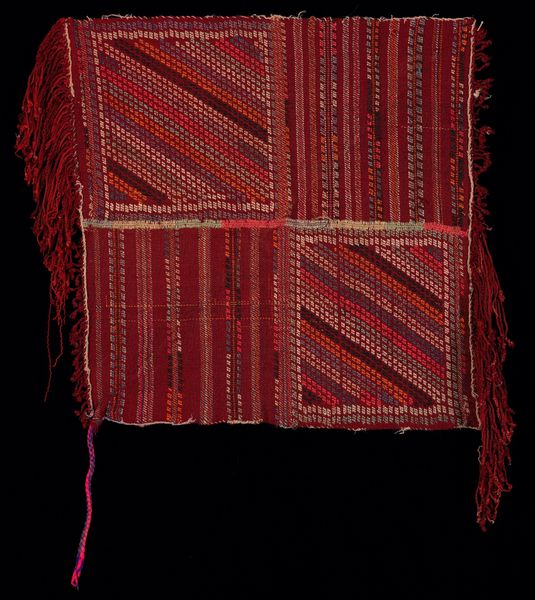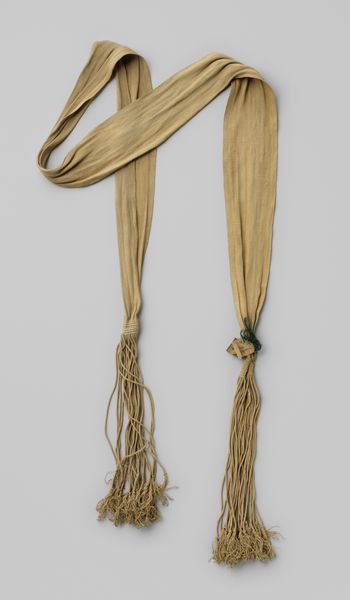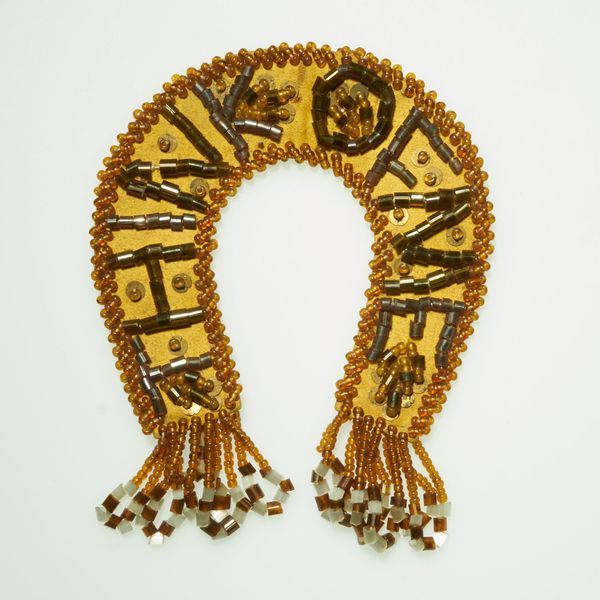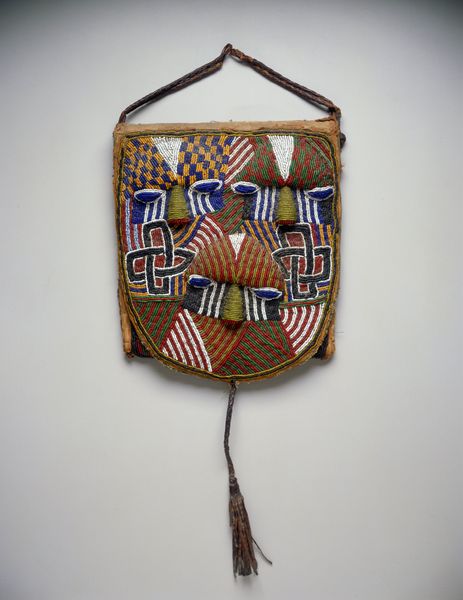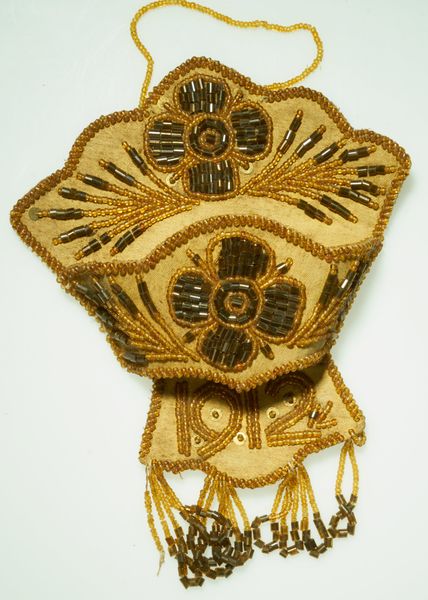
textile
#
decorative element
#
decorative
#
textile
#
fashion and textile design
#
form
#
geometric
#
line
#
decorative-art
#
decorative art
#
indigenous-americas
Dimensions: 13 1/8 x 11 7/8 x 3 9/16 in. (33.34 x 30.16 x 9.05 cm) (without fringe)
Copyright: Public Domain
Editor: Here we have a painted flat bag, or "parfleche," crafted around the 1880s by an artist from the Tsistsistas, or Cheyenne, people. Looking at its geometric design and the long fringes, it feels very grounded in its materials and purpose. What strikes you about this piece? Curator: Its compelling arrangement of shapes. Observe the stark contrast of colors–red and green against the neutral hide – establishing a visually arresting pattern. How do the vertical lines influence your reading of the central design? Editor: They seem to anchor the geometric shapes, creating a sense of symmetry and balance despite the slight imperfections. Is that a common element in works like these? Curator: Indeed. This structure lends the bag an inherent visual logic. We see repetition of forms, though not exact duplication, hinting at underlying symbolic content interwoven with aesthetic decisions. The lines themselves, would you say they contribute more to division or to unification? Editor: I’d argue unification, because the central red lines directly link to similar thinner red lines that go beyond the green diamonds to frame red shapes in each corner. It subtly pulls it all together. I wouldn't have noticed the framing elements at all if you hadn't made me look closely at the lines first! Curator: Precisely. These artistic choices showcase not only the practical function of the bag, but also a sophisticated understanding of formal composition. We are meant to appreciate this artwork on a structural and symbolic level, recognizing artistry in even the most functional objects. Editor: It’s amazing to see how a deeper look at these formal elements reveals the thoughtfulness and complexity embedded in what might seem like a simple design. Curator: And this formal language can unlock greater appreciation for cultural expressions embedded within these artifacts.
Comments
minneapolisinstituteofart almost 2 years ago
⋮
These two uniquely shaped rawhide cases highlight the technically skilled artistic abilities of Tsistsistas (Cheyenne) and Inua-ina (Arapaho) artists. Because they were allies, the Arapaho and the Tsistsistas share some artistic qualities, particularly their use of delicately drawn lines. The pattern you see on the fringed bag is one of three distinct patterns used by the Tsistsistas on their bags. This artist emphasizes the power of color in her dramatic shapes. There is a sense of balance as the amount of colored and uncolored areas are distributed evenly.
Join the conversation
Join millions of artists and users on Artera today and experience the ultimate creative platform.
